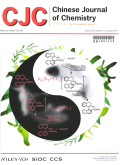- 钛学术文献服务平台 \
- 学术期刊 \
- 基础科学期刊 \
- 化学期刊 \
- 中国化学(英文版)期刊 \
null
What a Role did Histidine Residue Play in Arylamine N-Acetyltransferase 2 Acetylation? A Quantum Chemistry Study
基本信息来源于合作网站,原文需代理用户跳转至来源网站获取
摘要:
Arylamine N-acetyltransferases (NATs, EC 2.3.1.5) catalyze an acetyl group transfer from acetyl coenzyme A (AcCoA) to primary arylamines and play a very important role in the metabolism and bioactivation of drugs and carcinogens. Experiments revealed that His-107 was likely the residues responsible for mediating acetyl transfer.The full catalytic mechanism of acetylation process has been examined by density functional theory. The results indicate that, if the acetyl group is directly transferred from the donor, p-nitrophenyl acetate, to the acceptor, cysteine,the high activation energy will be a great hindrance. These energies have dropped in a little range of 20-25 k J/mol when His-107 assisted the transfer process. However, when protonated His-107 mediated the reaction, the activation energies have been dropped about 73-85 kJ/mol. Our calculations strongly supported an enzyme acetylation mechanism that experiences a thiolate-imidazolium pair, and verified the presumption from experiments.

推荐文章
期刊_丙丁烷TDLAS测量系统的吸收峰自动检测
带间级联激光器
调谐半导体激光吸收光谱
雾剂检漏 中红外吸收峰 洛伦兹光谱线型
不同盐度、温度及光照对漂浮浒苔生理生态的影响
浒苔
盐度
温度
光照
生理生态
期刊_联合空间信息的改进低秩稀疏矩阵分解的高光谱异常目标检测
高光谱图像
异常目标检测 低秩稀疏矩阵分解 稀疏矩阵 残差矩阵
内容分析
关键词云
关键词热度
相关文献总数
(/次)
(/年)
引文网络
引文网络
二级参考文献 (0)
共引文献 (0)
参考文献 (0)
节点文献
引证文献 (0)
同被引文献 (0)
二级引证文献 (0)
2006(0)
- 参考文献(0)
- 二级参考文献(0)
- 引证文献(0)
- 二级引证文献(0)
引文网络交叉学科
相关学者/机构
期刊影响力
中国化学(英文版)
主办单位:
中国化学会
上海有机化学研究所
出版周期:
月刊
ISSN:
1001-604X
CN:
31-1547/O6
开本:
16开
出版地:
上海市枫林路354号
邮发代号:
4-646
创刊时间:
1983
语种:
eng
出版文献量(篇)
5429
总下载数(次)
0
总被引数(次)
8860
期刊文献
相关文献
推荐文献
- 期刊分类
- 期刊(年)
- 期刊(期)
- 期刊推荐
力学
化学
地球物理学
地质学
基础科学综合
大学学报
天文学
天文学、地球科学
数学
气象学
海洋学
物理学
生物学
生物科学
自然地理学和测绘学
自然科学总论
自然科学理论与方法
资源科学
非线性科学与系统科学
中国化学(英文版)2022
中国化学(英文版)2021
中国化学(英文版)2020
中国化学(英文版)2019
中国化学(英文版)2018
中国化学(英文版)2017
中国化学(英文版)2016
中国化学(英文版)2015
中国化学(英文版)2014
中国化学(英文版)2013
中国化学(英文版)2012
中国化学(英文版)2011
中国化学(英文版)2010
中国化学(英文版)2009
中国化学(英文版)2008
中国化学(英文版)2007
中国化学(英文版)2006
中国化学(英文版)2005
中国化学(英文版)2004
中国化学(英文版)2003
中国化学(英文版)2002
中国化学(英文版)2001
中国化学(英文版)2000
中国化学(英文版)2006年第9期
中国化学(英文版)2006年第7期
中国化学(英文版)2006年第6期
中国化学(英文版)2006年第5期
中国化学(英文版)2006年第4期
中国化学(英文版)2006年第12期
中国化学(英文版)2006年第11期
中国化学(英文版)2006年第10期

 免费查重
免费查重










